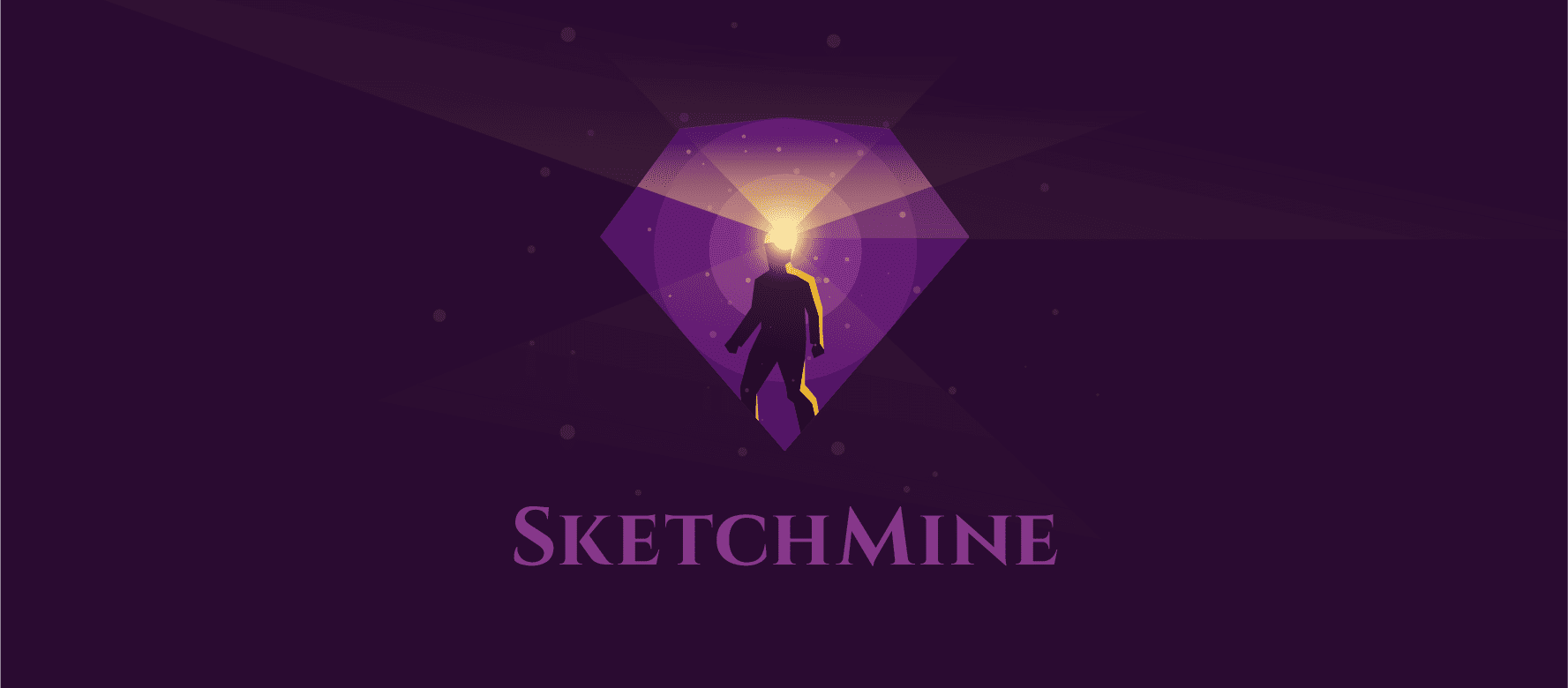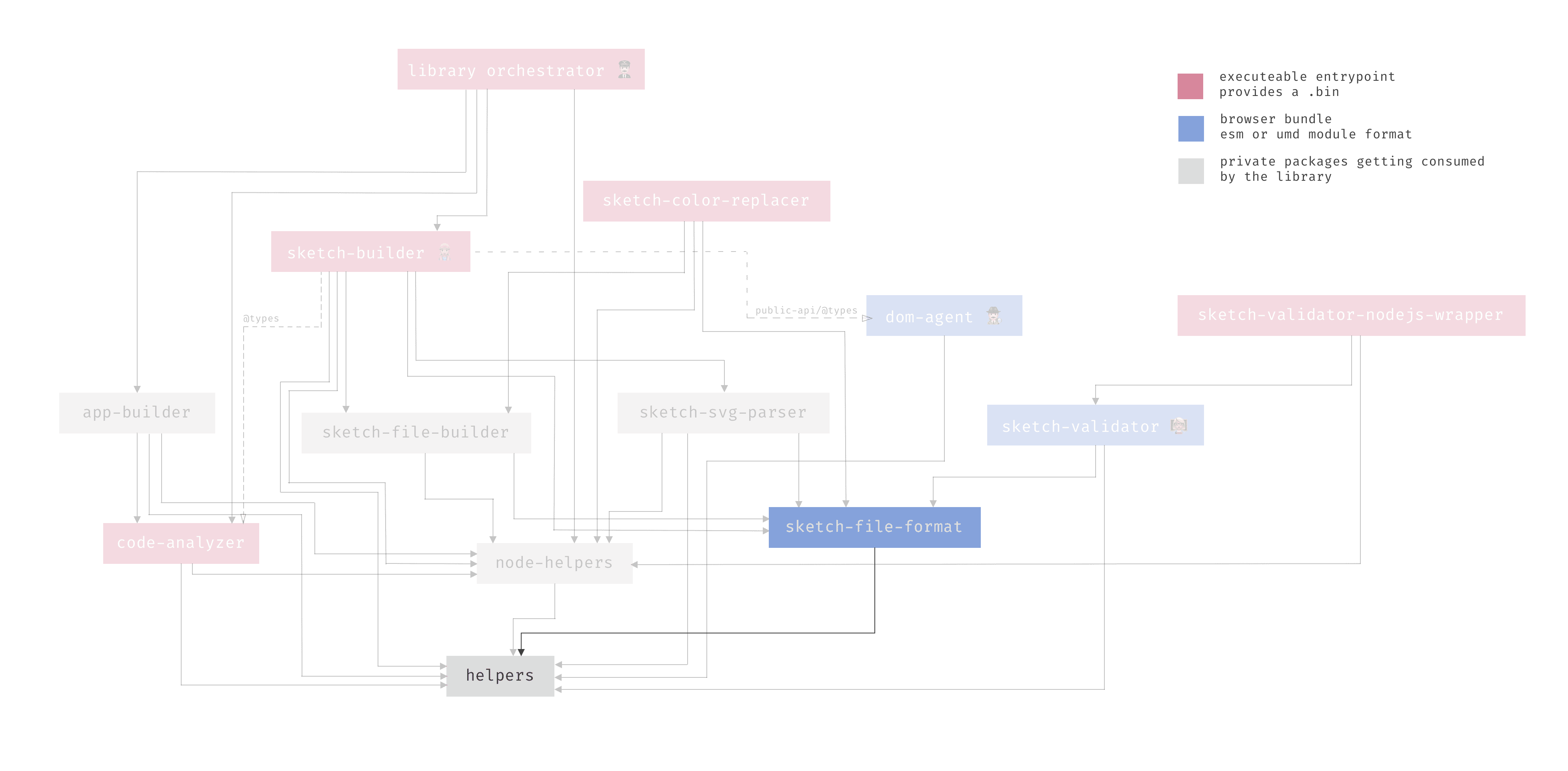@sketchmine/sketch-file-format
v3.0.0
Published
Abstract layer on top of the sketch file format.
Downloads
25
Readme

@sketchmine/sketch-file-format
The sketch file format provides a platform independent layer above the Sketch File formats JSON structure. To see the JSON output without unzipping or modifying the .sketch file sketch provides a tool called SketchTool that is shipped with Sketch.
To receive a dump of the JSON structure that is going to be built with this package you can use the following command: sketchtool dump path/to/document.sketch
Dependency graph

Architecture
Interfaces
The most helpful area in this package will be the ./src/interfaces folder that provides all interfaces for the Sketch file format. Everything that is a Sketch related interface should be prefixed with interface Sketch${object-name} {} like interface SketchBase {}.
Be aware that this collection of interfaces was reverse engineered, because there is no official documentation for that.
To gain insight into all the magic numbers in sketch are take a look at the sketch-constants.ts file that provides all the enums with human readable values.
Object Types
Sketch Object types are the _class properties in the JSON tree of a Sketch file.
All available Object Types that have been reverse engineered are listed in an enum in the base.interface.ts.
If you add a new model for a new Sketch object please be sure to add it to the ObjectTypes enum as well.
export enum SketchObjectTypes {
Artboard = 'artboard',
AttributedString = 'attributedString',
Bitmap = 'bitmap',
Blur = 'blur',
Border = 'border',
Color = 'color',
CurvePoint = 'curvePoint',
Document = 'document',
ExportOptions = 'exportOptions',
Fill = 'fill',
FontDescriptor = 'fontDescriptor',
Frame = 'rect',
Gradient = 'gradient',
GradientStop = 'gradientStop',
GraphicsContext = 'graphicsContextSettings',
Group = 'group',
InnerShadow = 'innerShadow',
OverrideValue = 'overrideValue',
Page = 'page',
ParagraphStyle = 'paragraphStyle',
Path = 'path',
Rectangle = 'rectangle',
RulerData = 'rulerData',
Shadow = 'shadow',
ShapeGroup = 'shapeGroup',
ShapePath = 'shapePath',
StringAttribute = 'stringAttribute',
Style = 'style',
SymbolInstance = 'symbolInstance',
SymbolMaster = 'symbolMaster',
Text = 'text',
TextStyle = 'textStyle',
}Models
The models are the abstract syntax tree of the Sketch file format. You can build the Object Tree of the Sketch file in Typescript classes.
Every Sketch Object should have its own models file (Try to avoid code duplication – for this purpose there is a base model where the class can extend from).
Building the package
To build the package Rollup.js is used as a module bundler. The configuration can be found in the rollup.config.js file and is orchestrated by the yarn package manager.
The package bundle is formatted commonjs and is meant to be consumed only by node.js applications.
The build can be started with the following two commands:
yarn buildfor building the package.yarn devfor building and watching the sources of the package (rebuilds after safe).
Linting
The source code of this package is going to be linted by our CI environment. To ensure a coding standard and quality use the configured linter tslint. This package extends from the tslint-config-airbnb and the linting configuration extends from the root tslint.json.
Run yarn lint to execute the linter.
Testing the package
To ensure that the sketch-file-format is working, write tests and put them in proper named file.
Important!
All tests according to this package should be wrapped in a describe with the prefix: [sketch-file-format] › ... like the following:
// import statements
describe('[sketch-file-format] › ${folder} › ${description of the suite}', () => {
// your tests should be placed here
});For tests the jest Framework was chosen, see jestjs.io for details.
Run yarn test to execute all tests specified for the Sketch file format. Run yarn test -f filename.test to execute only tests that match the provided RegExp for the filename.
